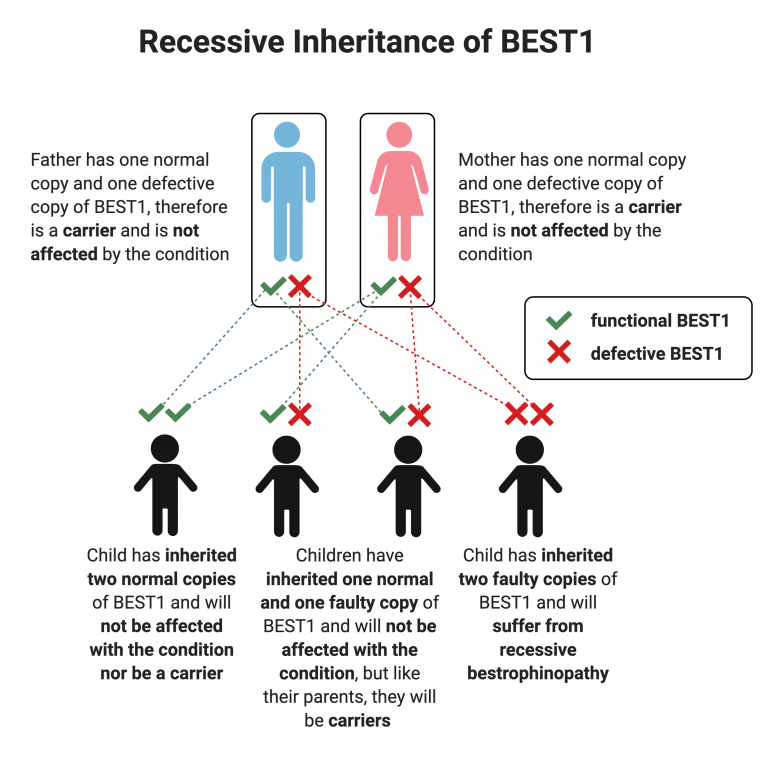Recessive disease occurs when two mutated copies of a gene are inherited, one from each parent.
In recessive bestrophinopathy, a patient inherits two mutated copies of the BEST1 gene, one from each parent. The only bestrophinopathy known to follow a recessive mode of inheritance is autosomal recessive bestrophinopathy (ARB). In ARB, the presence of two mutated/defective copies of the BEST1 gene can lead to the production of proteins that no longer function correctly or are completely absent, leading to disease.
We inherit one copy of the BEST1 gene from our mother and one from our father. In recessive disease, both inherited copies of BEST1 contain a disease-causing mutation. In order to inherit two faulty copies of the gene, each parent must have a faulty copy of the gene. Parents who have a mutated BEST1 gene, but do not show any symptoms of disease are known as carriers. Two carrier parents, with no diagnosed bestrophinopathy, can have a child with ARB if the child inherits both mutated copies.
If both parents have a single defective copy of the BEST1 gene the chances of having a child with recessive disease is 25% in each pregnancy, and there is a 50% chance of having a child who is a carrier. The image below shows this schematically:

 Close
Close

